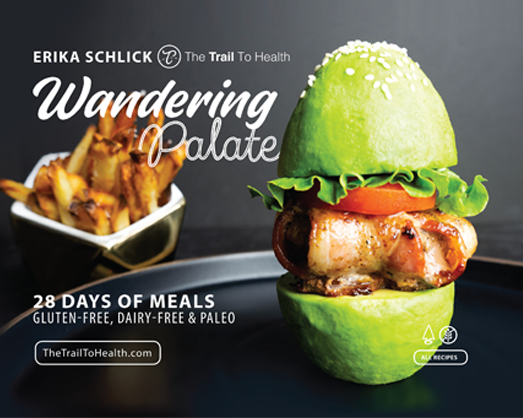Cooking With Fresh Herbs - Benefits And Recipes!
It’s no secret that we’re all spending most of our time at home these days. What does that mean? That the popularity of home cooking is on the rise. So much so, that 54% of respondents in a recent survey said they're cooking more than they did before the pandemic.
Cooking from home means you'll have more control over what goes into your body. Fast food may seem convenient, but it's filled with chemical additives, hormones, and unhealthy fat that cause long term damage! Not so convenient, after all.
Plus, your tastebuds crave the favor of fresh, organic ingredients that nourish our bodies.
Preparing healthy, delicious meals regularly takes practice, and the kitchen can be an intimidating place. However, when you’re cooking with fresh herbs, you really can’t go wrong!
Fresh herbs are packed with nutrients and vitamins, and it’s super easy to bring these live foods into your kitchen!
Ready to put your chef hat on and whip up some delicious, healthy food? Then it’s time to start cooking with fresh herbs.
Fresh Vs. Dried Herbs AKA Live Vs. Dead Food
You might be thinking… “but what about dried herbs?” Well, fresh herbs not only taste better, but they're much better for you. People have used herbs for tinctures and teas for thousands of years. In fact, herbs were the very first form of medicine.
Thankfully, people are beginning to realize their incredibly nutritive value once again.
While it's a commonly-held belief that dried and fresh herbs are interchangeable, it's simply not true.
Why?
Because there are literally no rules or regulations for testing herbs for pesticides or contaminants. What’s up with that? Herbs and spices are high-value commodities, which means their producers are more willing to let quality control slip to meet the high demand. Not cool.
To get their product up to FDA standards and on the market as quickly as possible, many dried herb manufacturers use irradiation for mold. While irradiation increases shelf life and destroys some bacteria, it also creates toxic carcinogens and strips the herbs of their nutritional value. So all that bountiful goodness from real herbs literally disappears with dried herbs.
All that’s left is a little flavor — but it’s nothing compared to the real thing!
What was once a beautiful, vitamin-packed bouquet of fresh herbs is now a dead, fried husk. We don’t want that. So, let’s talk about cooking with fresh herbs.
How To Get Fresh Herbs
One of the misconceptions about using fresh produce is that it's too expensive. I can honestly say this is not the case at all. It’s extremely easy to grow a fresh herb garden, and I’m excited to show you how!
The best way to have fresh herbs always at your fingertips is to grow them yourself. Even if you live in a studio apartment in a big city, there are plenty of opportunities to have an urban garden! You could have a small window-box planter, or if you're feeling fancy, a hydroponic system!
But if learning to cook and taking up gardening are too many new hobbies at once, you have more options! Most well-stocked grocery stores carry a selection of fresh, washed, herbs in their produce section. If you don't like the idea of visiting grocery stores right now, try signing up for a CSA box. That way, you'll have fresh produce and herbs delivered right to your door, ready to be transformed into delicious, healthy meals. (use code TRAILTOHEALTH for 50% off your 1st box!)
Ready to grab some fresh herbs and get cooking? Here is some information on which herbs are best for you, and some recipes to give you cooking inspo!
Parsley
Benefits: Parsley is a powerhouse of an herb. 1/2 cup of fresh parsley contains 547% of the daily recommended intake of Vitamin K, the nutrient responsible for blood clotting, bone, and heart health. Did you know it's also loaded with Vitamins A and C, both of which are essential nutrients with antioxidant properties? Vitamin C also makes skin-protecting collagen, which is especially needed during the summer months when people spend more time in the sun.
Recipes:
Chimichurri - available in my cookbook, Wandering Palate
Cilantro
Benefits: Who doesn’t love fresh cilantro? It adds that flavorful bite to Asian and Mexican dishes, and is oh so fresh. Best part? It’s filled with nutrients to help with digestive health, immunity, and brain health!
However, for roughly 20% of people, this potent herb tastes like soap due to a cluster of genes that alter the perception of the original flavor. If you fall into this category, you may want to nix the cilantro in favor of other tasty herbs on this list.
Recipes:
Lemongrass Vermicelli Bowl - available in my cookbook, Wandering Palate
Mint
Benefits: You could not ask for a better herb than mint. Not only is it incredibly easy to grow, but it also provides a multitude of nutritional benefits. Mint contains menthol, an anti-inflammatory that helps with indigestion, nausea, and IBS effective remedy for IBS, indigestion, and nausea. Mint contains menthol, an aromatic anti-inflammatory.
Rosemary
Rosemary is extremely rich in antioxidants, and even more powerful than Vitamin C! Several scientific studies have even suggested that rosemary may prevent cancer cells from replicating.
Work this wonderfully aromatic herb into your diet with these tasty recipes:
Recipes:
Oregano
Benefits: As a natural antibacterial, oregano is filled with antioxidants to protect your body against colds, cellular damage, and infections. A nutrient cocktail of vitamin K, iron, fiber, vitamin E, calcium, and manganese, you’ll want to add oregano to your daily herb rotation.
Recipes:
Lemon Oregano Chicken - available in my cookbook, Wandering Palate
Thyme
Benefits: Thyme is one of the most popular seasonings in cooking, but the fresh herbs are so much tastier — and healthier! Thyme is a great natural source of Vitamins A and C. If you’re feeling a scratchy throat or head cold coming on, add thyme to soups, meats, or vegetables to build up immunity and stave off sickness.
Recipes:
Pistachio Crusted Cod - available in my cookbook, Wandering Palate
Basil
Benefits: I can't do an article about herbs without mentioning basil. From savory bowls of Vietnamese pho to pots of Italian marinara sauce, basil can be found in dishes worldwide.
Chock-full of iron and magnesium, basil helps with bone and circulatory health, and is also an excellent source of Vitamins K, A, and C.
Recipes:
Tarragon
Benefits: Struggling to sleep well? Then load up on tarragon, a fresh herb that naturally regulates the body’s circadian rhythm so you can catch some zzz’s. In addition, it can alleviate pain and increase bone strength.
Recipes:
Lemon & Tarragon Dressing - available in my cookbook, Wandering Palate
Dill
Benefits: One of the best fresh herbs for Vitamin C is dill! Not only does it add that briny bite to your food, but it’ll protect your body against infection, and provide a healthy dose of fiber, folate, and calcium for healthy bones.
Recipes:
Baked Dill Salmon - available in my cookbook, Wandering Palate
Mint Dill & Cucumber Salad - available in my cookbook, Wandering Palate
Sage
Benefits: A delicious scent and flavor, sage is filled with antioxidants that help lower bad cholesterol, reduce blood sugar, increase brain cognition, and promote healthy skin!
Recipes:
Chicken Apple patties - available in my cookbook, Wandering Palate
Lavender
Benefits: You might know lavender oil as a delicious scent, but it’s also a tasty fresh herb! Lavender helps alleviate inflammation and can provide aid from pesky bug bites or oven burns.
Recipes:
Beet and Grapefruit Salad with Lavender Citrus Dressing
Marjoram
Benefits: Marjoram is one of the best flavors and fresh herbs for cooking chicken. In addition to being delicious, it’s a nerve and heart tonic that improves circulation, coughs, digestive issues, and nervous system pain like headaches and dizziness.
Recipes:
Roasted chicken - available in my cookbook, Wandering Palate
Chives
Benefits: Chives are full of Vitamin K, an excellent herb for bone, heart, blood health. They also contain tons of antioxidants and add a shot of flavor to savory breakfast foods!
Recipes:
Time To Start Cooking With Fresh Herbs!
The best way to reap the benefits of cooking with fresh herbs is to ditch dried herbs. Your body deserves the best, and there is nothing better than fragrant, fresh herbs.
Need a hack for keeping your fresh herbs fresh? I like to put my parsley and cilantro in a glass of water. This helps them stay fresh for weeks! Otherwise, store your fresh herbs in the fridge, or plant an herb garden to keep them fertilized and healthy. Simply pick them fresh when you cook and enjoy the life and scents they bring to your living space!























